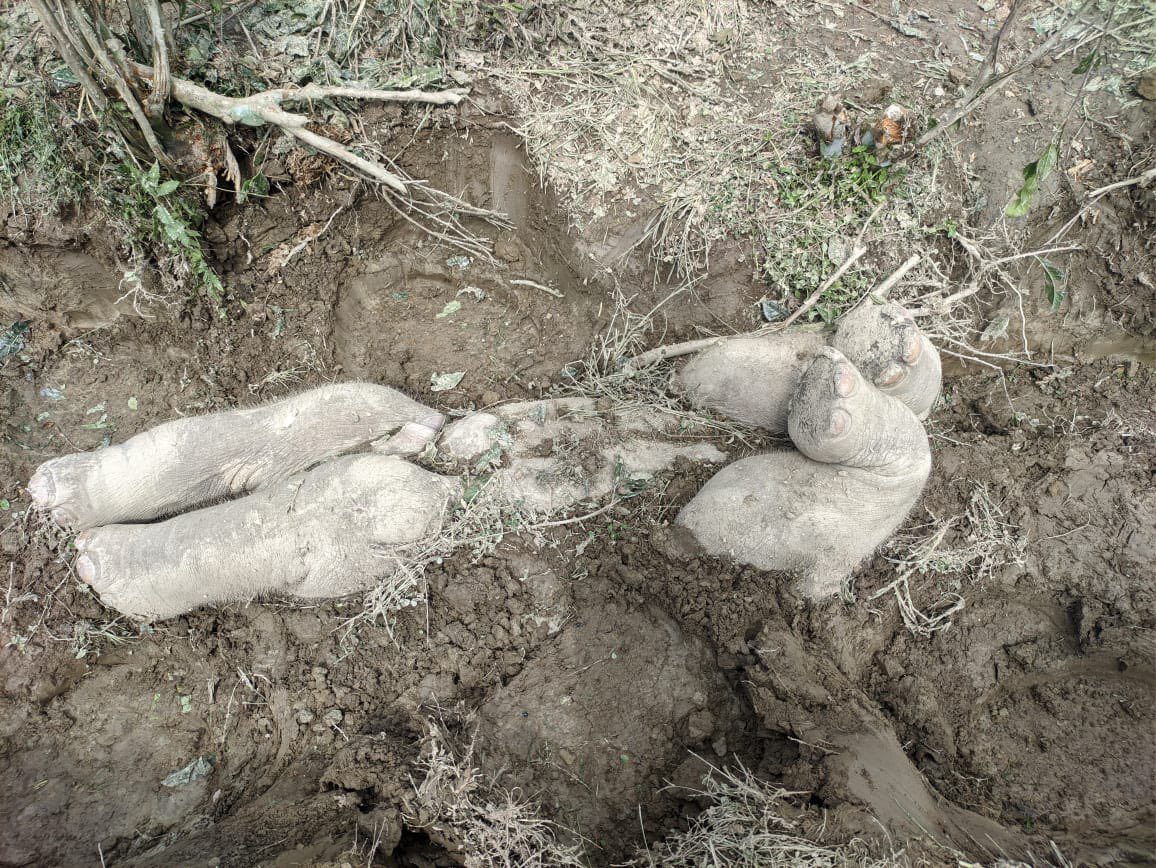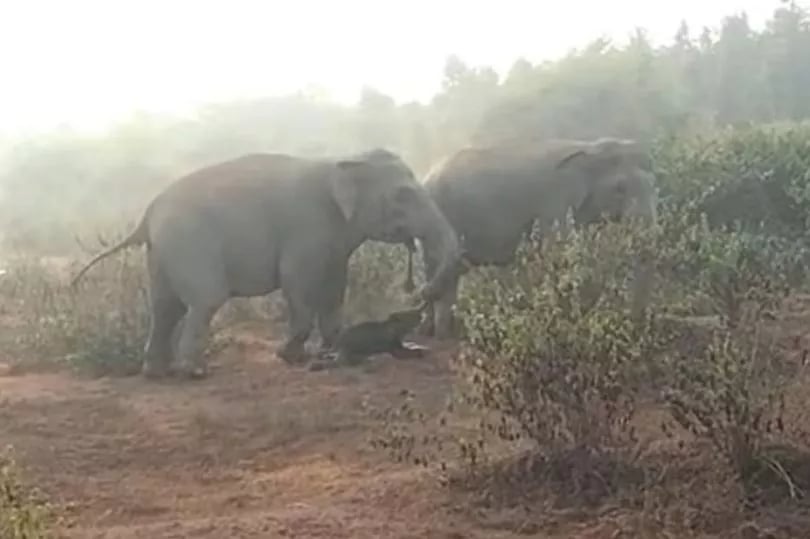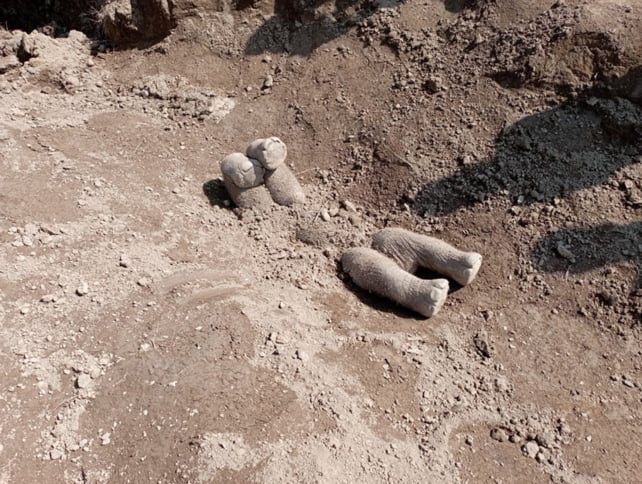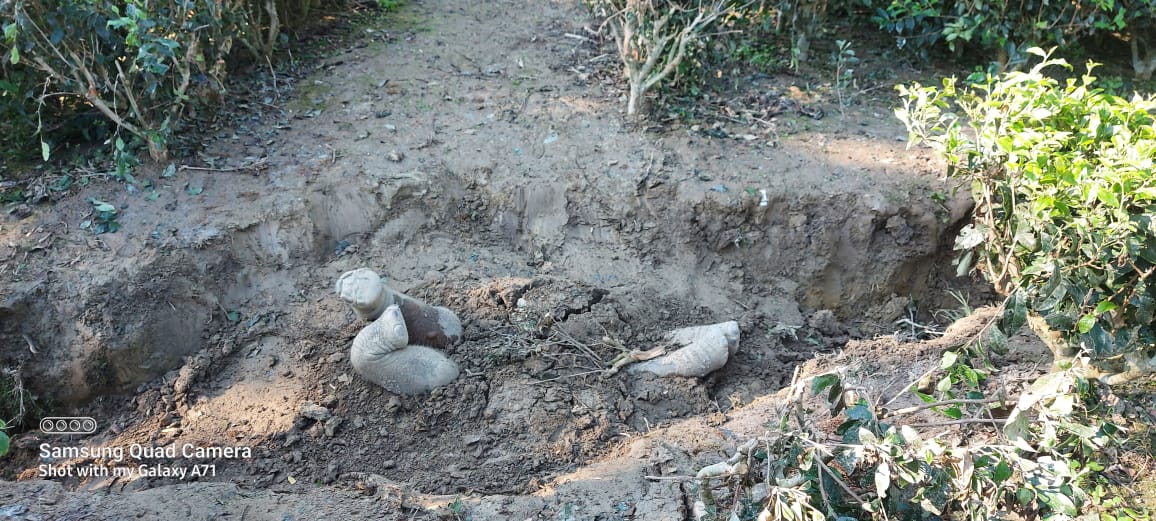Scientists Capture Eerie Photos of Mysterious Elephant Burial
![]()
Scientists captured eerie photos of a mysterious elephant burial — that revealed how animals mourn and bury their dead in a poignantly similar way to humans.
Warning: Some of the below images are graphic photos of buried elephant calves.
According to a study published last month, researchers discovered that Asian elephants loudly mourn and bury their dead calves upside down.

In fascinating photos, the scientists revealed how a herd carries a deceased calf by the trunk and legs.
Then, in a practice strangely reminiscent of human funeral rites, the elephants bury their dead calves in the earth with its legs facing upward.


Researchers, from the Indian Institute of Science Education and Research, discovered five calf burials like this in India’s Bengal region between 2022 and 2023.
In one case, the herd of elephants loudly roared and trumpeted as they buried the calf, according to the researchers.
Elephants Mourn Their Dead
“Through opportunistic observation, digital photography, fieldnotes, and postmortem examination reports, we suggest that the carcasses were buried in an abnormal recumbent style irrespective of the reasons for the calf’s death,” authors Parveen Kaswan and Akashdeep Roy write in the study.

![]()
The researchers add: “Elephants are caring social animals, and based on external examinaton of the carcasses, we also suggest that the calves were placed delicately by gripping one or more legs by the herd member(s).”
Kaswan and Roy say that there was “no direct human intervention” in any of the five calf deaths studied between 2022 and 2023.
According to Science Alert, the study found that only calves are carried away for burial, owing to the “non-feasibility” of transporting heavier adult elephants by the rest of their herds.
There were “clear footprints” of between 15 and 20 elephants observed around the burial sites and over the soil covering the bodies of the calves — all of which had died of multiple organ failure aged between three months and one year.
Science Alert reports that the elephants buried the calves in irrigation canals on tea estates — largely untrodden paths that were hundreds of meters away from the nearest human settlements.
And in all five instances, the herd of Asian elephants “fled the site within 40 minutes of burial” and later avoided returning to the area where their calves lay. They even took different parallel routes for migration to avoid the burial site.
This particular behavior is notably different from that of African elephants are known to mourn their dead and regularly visit their bodies, even after they start to decay.
The researchers hope their study will encourage further research on the mourning behaviors of other animals.
Image credits: Header photo licensed via Depositphotos ; all photos within article by West Bengal Forest Department